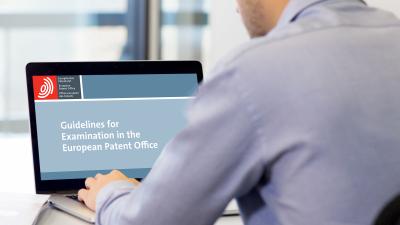Ninth meeting of the eSACEPO
On 12 March, the Office met with the SACEPO Working Party on e-Patent-Process (eSACEPO), which included 22 newly appointed members, to discuss on-going developments and new proposals for digital transformation.
During the meeting, user representatives were updated on new features in MyEPO Portfolio, implemented thanks to the early feedback from pilot users. They also discussed the decommissioning of ageing technologies such as fax, smart cards, and the legacy Mailbox and MyFiles tools. Several SACEPO members commended the EPO for moving forward in this area and for providing measures that ensure a smooth transition to new tools. Under SP2028, the EPO will continue to enhance MyEPO digital services and make it even easier for users to conduct their EPO business online.
The eSACEPO members were updated on upcoming legal and procedural changes aimed at supporting digital services. Notably, the EPO presented a more flexible regime for signatures on assignments and other documents submitted in support of requests under Rules 22, 85 and 23 EPC. In addition, members reviewed an updated legal basis for MyEPO portfolio to ensure it is fit for further enhancements, such as facilitating requests for the registration of transfers of rights and licences.
Following the discussion on the legal changes, the EPO presented the latest improvements to the Unitary Patent Dashboard, including the display and monthly update of “Top 25 proprietors” and “European proprietors’ profile”.
Before closing the meeting, the EPO’s Chief Economist reported on the launch of the Deep Tech Finder by the Observatory on Patents and Technology. Users welcomed the possibility to identify European startups filing EP applications and look forward to the gradual addition of new fields of technology into the tool. These additions will further contribute to EPO’s efforts to disseminate patent information.
We listen to our users
The EPO’s progress and achievements in digital transformation stem from the input and responses gathered from users. Feedback is not only obtained through SACEPO, but also via the many feedback channels that support user dialogue, such as meetings with key applicants, user satisfaction surveys and the ombuds office.
As with the previous meeting, the feedback from eSACEPO participants was invaluable and will be taken into consideration as the EPO begins implementing its new Strategic Plan.


